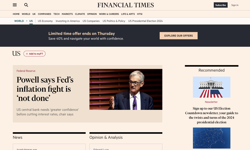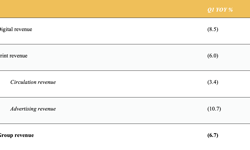There are different ways publishers can exploit the web. One extreme is the wishy washy, toe in the water, not-quite-sure-what-to-do approach of reproducing a couple of pages from your publication on the web and then hoping someone notices. At the other extreme are companies that have moved beyond the sterile "hard copy vs online" debate and embraced the new technologies to offer completely new and distinct products. One such product is Consult GEE from Sweet & Maxwell.
GEE has been providing businesses with regulatory and legal information for many years in the traditional form of loose leaf folders with quarterly updates. In May 2002 they launched Consult GEE (www.consultgee.co.uk). There was a degree of rebranding and repackaging of content that was (and still is, though to an ever decreasing degree) being distributed by hard copy but the really exciting thing about Consult GEE was the way in which new technologies were utilised to provide the customer with a whole host of new services. According to Jose Garcia, business manager online at Sweet & Maxwell, "Consult GEE is more than just a book online, not just a reflection of the hard copy offering".
Central to the success of Consult GEE has been an adventurous use of the new technologies. Their core market is people within organisations that need to keep abreast of legal and regulatory developments in areas such as human resources, health and safety, payroll and financial management. The ever increasing amount of regulation emanating from both London and Brussels means that reliable, up-to-date, easily accessible and permanently available information is in constant demand.
There are three key areas where the web has proved a much more successful deliverer of this information than traditional loose leaf folders.
1. Recency
However much publishers may claim their information is up-to-date the fact remains that the mechanics of the hard copy production and distribution process means that the hard-copy approach will always suffer from a greater time lag. The ability to post information to a web site almost at will means that the time lag for the online product can be measured in minutes rather than days. Kate Kelk, HR manager at Deloitte & Touche says that "unlike previous paper reference tools I am confident that it is updated on a regular basis".
2. Accessibility
A proper comparison between the hard copy and online approach is only possible by understanding how the hard copy route works. Before the advent of their Consult GEE division, Sweet & Maxwell would send out loose leaf folders to subscribers and these folders would be supplemented with quarterly updates. Whilst considerable effort was always put into providing convenient cross referencing between the various folders and pages, all it would take would be a misfile of an update, failure to put the file back in the right place and chaos would ensue. Indeed even without these mishaps the process of finding the relevant pages in the hard copy format is long winded and tedious. The hyperlinks within the web offering, and even more crucially the search functionality means that the relevant document can be searched and retrieved from an archive of thousands of pages within a few seconds. Log on, enter your password and a couple of clicks later you are where you want to be. In the time it has taken you to find and print the document on line, your unfortunate paper chasing predecessor will just about have lined up the stool and will be putting out a long arm for that irritatingly just-out-of-reach folder.
3. Relevance
Online functionality allows Consult GEE subscribers to create a number of personal profiles for themselves where they can indicate which areas they are particularly interested in. The system holds this information and whenever the subscriber logs on, will present them with a number of pop up alerts informing them of the fact that there has been a change or development in their area of expertise.
Garcia says that Consult GEE’s strategic goal is to "become a one stop shop" for their users and to "embed our site into their workflow". The results so far have been excellent. According to him Consult GEE has achieved a significant presence in both corporate (38% penetration of the FTSE Top 100 companies) and Public Sector (eg 88% of police forces also subscribe to the service). Whilst undoubtedly some of these users are converters from the paper product Sweet & Maxwell is also using the new functionality to attract new users to the service.
Whenever I meet a successful circulation marketing manager, my lazy side can’t help hoping that I am about to hear THE solution. What works best? Direct mail? Telemarketing? Email broadcasting? Exhibitions? Give me the answer and I can go away and just get on with it. Unfortunately it is never as simple as that and Garcia is a firm believer in the integrated approach. Surely, I thought, there must be something he can rule out, but no – he "likes trying different things; everything works if you do it properly. If you just focus on one channel then you end up missing lots of opportunities."
14 day trial
The centrepiece of the marketing strategy is the "14 day trial" and marketing efforts are focused on two areas: firstly getting people to sign up for the trial and secondly converting trialists to paid up subscribers.
Strategies to maximise free trial sign up previously centred almost exclusively on direct mail. Typically they were getting 1% response on direct mail. Garcia has changed direction and the bulk of this work is now done by telemarketing and they are getting between 5-10% response. For Garcia the increased response rate justifies the greater costs of telemarketing. Right from the start Consult GEE has been using BCC Marketing Services for the outbound telemarketing. Clearly a close working relationship has been formed between the two companies – so much so that the charging mechanism has moved away from the "per concluded call" formula to an hourly flat rate.
Broadly speaking the approach is for GEE to provide lists (sourced both internally and externally) to BCC. Interestingly some of these lists are not mailed first, but cold called. According to Matthew Binley of BCC the aim is "to get a foot in the door;" to introduce the Consult GEE brand and to "sell" the 14 day trial. BCC then feeds back details of prospective trialists to GEE. It is all about lead maximisation. Perhaps unsurprisingly the best results appear to come from the internal lists (eg purchasers of other GEE products, lapsed subscribers). One thing Binley has noted is that it is much easier to sell the concept of a free trial for online products than for traditional printed versions.
Once details of the prospective trialist have been passed back to GEE their internal sales teams take over. BCC can handle subscription sales, but in this case where there is a very high value subscription with a high degree of set up, installation and training involved it was felt that the specialist in-house expertise of GEE would work better at this stage of the process.
Phase two
So phase one of the marketing is lead generation and phase two is converting those trialists to paid. During this second phase there is a heavy emphasis on customer service. The trialists are encouraged to use the Consult GEE services to the full in the aim of getting the users comfortable and hopefully reliant on the product before the trial period is up. In addition to the original set up (installation, password set up and basic training) several other calls will be put in during the fortnight to offer help, guidance and all-round hand holding. The hope is that at the end of the 14 days, the trialists would sooner lose their right arm than this wonderful new service.
The conversion rates (both from cold list to trialist and from trialist to paid) are high, although Garcia was a little coy about putting figures on it. For those non-converting trialists Garcia has a number of strategies. If the trialist has simply not had enough time to put the product through its paces then extending the trial period is one option, although he is wary of the risks of being strung along. The other non converters are then questioned as to why not, their database record will be coded up and they will then be periodically re-approached. Garcia finds that a good excuse to call them again is provided by the quarterly release of new enhancements to the site.
Before I closed, I thought I would get Jose Garcia’s thoughts on the perennial "hard copy vs online" debate. Clearly to him, it is not a question of either / or. An online site like Consult GEE is much more than just a magazine online. "People search online but when they want to read something they print it out" reasons Garcia. And as if to emphasise his practical approach to marketing, GEE publish a quarterly hard copy newsletter which is sent free to all Consult GEE subscribers. Even online products can still find some value in the printed page!
FEATURE
Success is Sweet
Web usage has evolved to the point where it is no longer viewed as simply an alternative distribution channel but as a means of offering totally new services and enhanced levels of customer service. James Evelegh talks to Jose Garcia of Consult GEE and Matthew Binley of BCC Marketing Services.










